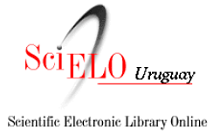Biological and pharmacokinetic performance of two commercial formulations of ivermectin 3.15 % in bovines
Keywords:
Rhipicephalus (Boophilus) microplus, Macrocyclic lactone, Residual efficacy, PharmacokineticAbstract
A stall test was performed to evaluate two ivermectin formulations (Ivomec Gold® and a generic one at 3.15%). Residual efficacy against larval challenges of Rhipicephalus (B.) microplus and plasmatic levels of ivermectin were studied. In both formulations residual efficacy presented a large scatter in the number of days of detachment of engorged females after treatment, discounting the residual parasitic cycle a range of 35 to 63 days was presented. Statistical analysis of the results of both formulations showed a residual period of 52 days (median) before reinfestation with larvae of R. (B) microplus. The average pharmacokinetic parameters area under the curve (AUC), represented values of 1795±188 and 1351±118, whereas plasma peaks (Tmax) occurred at 13.4±4.1 and 15.0±3.6 days post inoculation reaching maximum concentration (Cmax) of 65.4±1.5 and 41.1±0.3 ppb in Ivomec GOLD ® and generic formulation respectively. Concentrations below 10 ppb may represent the threshold below the parasitic cycle could develop and engorged ticks obtained. These results allow a better understanding to evaluate the performed of new formulations in stall and field trials to evaluate efficacy, residual efficacy and the withholding period.
Downloads
Published
How to Cite
Issue
Section
License
Copyright (c) 2016 Sociedad de Medicina Veterinaria del Uruguay

This work is licensed under a Creative Commons Attribution 4.0 International License.









